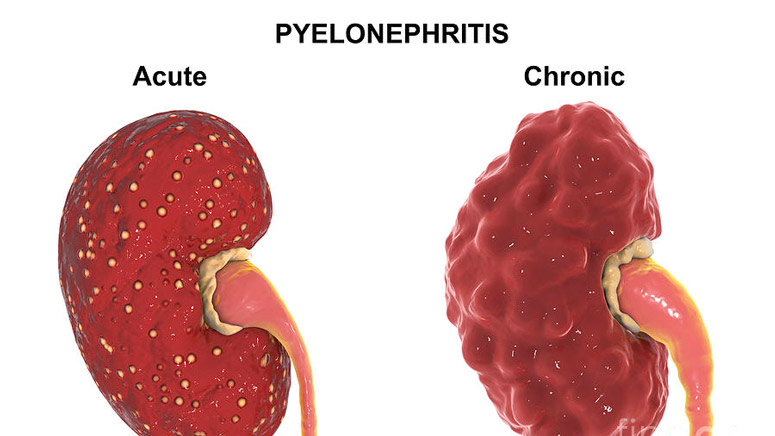Pyelonephritis, also known as kidney infection, affects the upper part of the urinary tract, and it is usually caused by germs (usually bacteria (bacterial) or, in some exceptional cases, fungi (fungal) or virus (viral)) that travel up through the ureters that connect the kidneys to the bladder. It often begins in the urethra and travel to one or both of the kidneys. [1]
Infections of kidneys require immediate medical attention. In cases where it is not treated, this infection can lead to permanent damage of the kidneys. In some cases, the bacteria can spread to the individual’s bloodstream, causing a life-threatening infection. Its early treatment, however, helps avoids complications. [2]
This is one of the reasons it is essential that one is able to recognize the symptoms that signify the presence of pyelonephritis.
Forms of Pyelonephritis

There are, however, two forms of pyelonephritis, i.e., it can be acute or chronic. [3]
Acute pyelonephritis occurs suddenly (within hours or days). With proper treatment, the disease lasts 10 to 20 days (depending on the causative agent) and usually ends with a full recovery.
Chronic pyelonephritis can be a consequence of acute pyelonephritis transition to the chronic stage or can also be an onset of chronic infection. Chronic pyelonephritis is a sluggish, periodically exacerbated bacterial inflammation of the kidney tissue. Chronic pyelonephritis leads to the gradual replacement of kidney tissue with non-functional connective tissue. Chronic pyelonephritis is often complicated by arterial hypertension and renal failure.
The chronic form is rare. It is more present in children or individuals that have urinary infections. [4]













